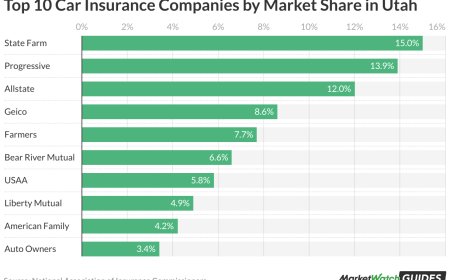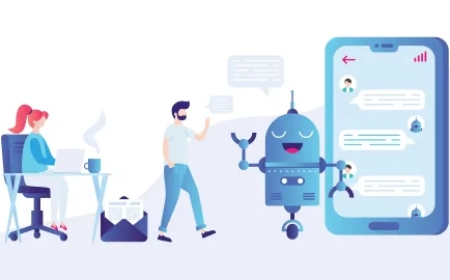Multimodal Generative AI Is Here: The Fusion of Language, Vision, and Sound
Discover how multimodal generative AI is transforming business by unifying language, vision, and sound. Learn how gen AI development services can help enterprises harness this cutting-edge technology for smarter content, better UX, and scalable innovation.

The AI environment is changing fastand the newest step forward is one of fusion, not fission. Welcome multimodal generative AI: computers that can comprehend, manipulate, and create from many modes of datatext, images, video, audiosimultaneously. This new tide is reshaping how we construct smart systems, create products, and engage with machines.
For years, AI models were compartmentalized. A model might analyze text, another might categorize images, and another might produce sound or speech. But human communication in the real world usually involves more than one mode. Humans exchange information via language, expression, visual signals, tone, and gesturesaltogether. Multimodal AI tries to emulate that integral intelligence.
What Is Multimodal Generative AI?
Multimodal generative AI is used to describe models that can both generate and interpret outputs in multiple data modalitiessuch as language, vision, and audioin an integrated fashion. These models aren't simply trained on one type of input; they're trained on a rich mixture of types so they can cross-reference and co-generate from them.
Imagine an AI that can:
-
Watch a silent video and describe whats happening in detail
-
Generate realistic images from written prompts
-
Create narrated video summaries from a mix of articles, images, and infographics
-
Respond to a voice message with contextual visuals and relevant text
Such capabilities are not theoretical. Todays most advanced modelslike OpenAIs GPT-4o, Google DeepMinds Gemini, and Metas I-JEPAare making this possible.
Why It Matters for the Enterprise
Multimodal AI is not a gimmicky tech demo. It is the next great leap for business. The ability to consume, understand, and respond to multiple content modalities will allow organizations to expand productivity, personalization, and accessibility to new frontiers.
1. Enhanced Customer Experience
AI-powered chatbots are now becoming AI concierges. A multimodal agent could receive a photo of a broken product, analyze the image, cross-check the customers voice note, and respond with personalized troubleshooting instructionsall in one interaction.
2. Smarter Content Creation
Marketing and media teams can use multimodal AI to generate campaign packages that include copy, visuals, audio scripts, and even animated explainers based on a single brief. This compresses creative cycles and democratizes content production.
3. Unified Knowledge Management
In fields like healthcare, legal, and education, knowledge often spans modalitiesaudio interviews, scanned documents, charts, transcripts, and videos. Multimodal AI can synthesize all of this into coherent insights, making cross-functional collaboration faster and more informed.
4. More Inclusive Interfaces
By processing both visual and audio cues, AI systems can become more accessible to people with disabilitiesgenerating alt text, transcriptions, and sign language translations in real time.
Key Technologies Behind the Shift
At the core of this revolution are foundation models trained on multimodal datasets. Some of the enablers include:
-
Transformers & Vision-Language Models: Models like CLIP, Flamingo, and Gemini use transformer architectures to fuse and align textual and visual representations.
-
Cross-Attention Mechanisms: These allow the model to relate elements across different modalitiesfor example, linking the word car in a sentence to its visual counterpart in an image.
-
Contrastive Learning: Techniques that help the AI learn how different modalities correspond to the same meaningfor instance, associating the sound of barking with an image of a dog.
-
Multimodal Embeddings: Shared vector spaces where text, audio, and visuals coexist, enabling smooth translation between formats.
Current Limitations and Risks
Despite impressive advances, multimodal generative AI is not without its challenges:
-
Data Bias: Training on biased or unbalanced multimodal datasets can lead to models that reinforce stereotypes or misinterpret cultural context.
-
Misalignment: AI may hallucinate by generating mismatched or implausible combinationslike placing an umbrella indoors or giving a dog a human voice tone.
-
Heavy Compute Costs: Training and deploying multimodal models is resource-intensive, making them less accessible to smaller firms without cloud scale.
-
Interpretability: Understanding why a multimodal AI made a certain decision is more complex than in unimodal systems.
Future of Human-AI Collaboration
As these systems develop, we're entering a new paradigm of human-machine interaction. Users will engage with AI not through a prompt or click of a button, but by talking and using visual gesturesjust as we would with a human assistantor sharing a screen, or observing a process outside in the real world.
Think of creative teams engaging an AI assistant in a brainstorming session:
-
A designer sketches an idea on a tablet
-
A strategist shares the intention verbally
-
A writer reads aloud a paragraph that sets the mood
-
Then the AI brings all of this together to create a complete campaign deck, complete with images, copy, video storyboard draft, and draft voiceover.
This is not the stuff of science fictionit is already beginning to happen.
Real-World Examples
-
Education: AI tutors that can explain diagrams, read essays aloud, and answer questions conversationally and via relevant visuals.
-
Retail: Virtual shopping assistants that can process voice commands, show clothing combinations, and describe product features in interactive visual and text formats.
-
Healthcare: AI tools that synthesize patient regulatory histology from scans, charts, and recorded consults to help with diagnosis.
The Strategic Path Forward
For businesses looking to explore this frontier, partnering with providers of Gen AI development services can offer a competitive edge. These experts can help tailor multimodal models to your specific industry needs, ensuring responsible integration and scalability from day one.
-
Assess Data Readiness: Ensure your organization has clean, well-labeled multimodal data assets.
-
Start with High-Impact Use Cases: Pilot areas like customer service, training, or internal knowledge access.
-
Invest in Governance: Set up policies for AI ethics, transparency, and model monitoring.
-
Train Cross-Functional Teams: Equip staff with the know-how to leverage multimodal interfaces and prompt engineering.
-
Partner for Scale: Leverage platforms and vendors offering customizable multimodal capabilities tailored to your industry.
Final Thoughts
Multimodal generative AI represents the next frontier in machine intelligence. By breaking down the walls between language, vision, and sound, these systems are bringing us closer to truly natural interaction with technology. Enterprises that embrace this fusion will unlock new levels of innovation, inclusivity, and engagement.
As with any transformative shift, success lies not just in adoptionbut in strategic alignment, thoughtful implementation, and human-centered design. The fusion is here. Its time to harness it.


































